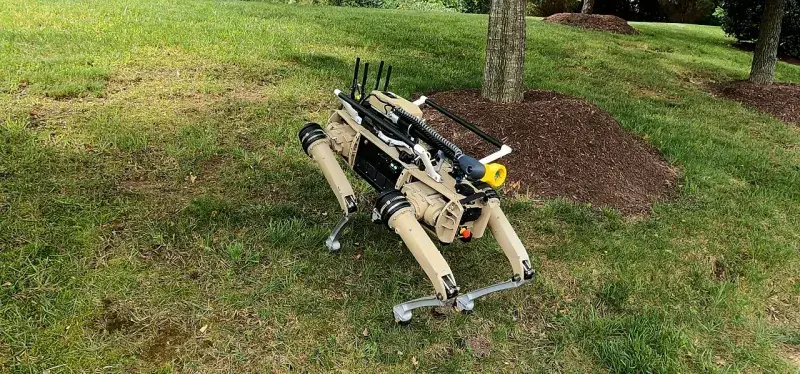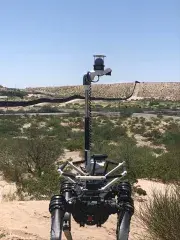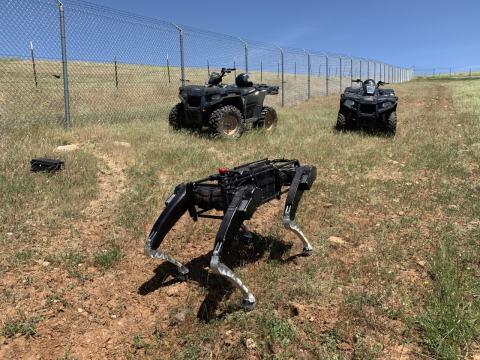Robot dogs will begin patrolling a vast territory in the American Southwest with the testing of mechanical ground drones that resembles canines.
The goal of the program is to leverage technology to force-multiply the U.S. Customs and Border Protection presence, as well as reduce human exposure to life-threatening hazards.
Early on, CBP voiced interest in a four-legged ground drone solution and are now planning to use the 100-pound robot dog that were bred to do exactly the kind of work that CBP humans were doing.
The rugged, quadruped robot is able to traverse all types of natural terrain including sand, rocks, and hills, as well as human-built environments like stairs. The dog robot can do what other robots can’t because they have legs, not tracks.
“Just like anywhere else, you have your standard criminal behavior, but along the border you can also have human smuggling, drug smuggling, as well as smuggling of other contraband—including firearms or even potentially, WMD,” explained Agent Brett Becker of the CBP Innovation Team (INVNT). “These activities can be conducted by anyone from just a lone individual, all the way up to transnational criminal organizations, terrorists or hostile governments—and everything in between.”
Becker elaborated on the perils by adding,
“Operating out in the desert or mountains, agents and officers have to contend with the rugged terrain, high heat and humidity, and then, of course, they can come across those who wish to do harm. But there are plenty of risks closer to home, too. For instance, when missions take Border Patrol Tactical Operators into towns, cities, or ports, they can encounter hazardous environmental conditions, volatile individuals, or hostile threats. These situations can all be inherently dangerous.”
Before moving into the use-case exercise phase, the robot dogs first went to a facility in Lorton, Virginia, for the “initial payload integration” phase. The so-called “payloads” are video and other sensor packages that, after being mounted onto the robot dog, can transmit real-time video and other data back to the human operating or monitoring the AGSV. The team assessed the ease and integration of loading different payload cameras, sensors, and radios onto the AGSVs, and then tested their ability to be controlled from a laptop or a handheld remote. Movement on asphalt, grass, and hills was also evaluated.

Having successfully passed the milestones in Lorton, things moved to El Paso, Texas, for advanced testing and evaluation.

Along the border, the challenges ramped up as the use-case exercises began. This phase assessed the capabilities of the robot dogs in realistic scenarios.
The robot dogs were tested by walking up hills, down ravines, and over rocks, all while carrying 20-pounds worth of payload.

Then, the testing transitioned to an indoor training facility that was built to replicate a residential building.
There, the robot dogs would encounter a scenario that simulated being met by potentially hostile individuals. Back out in the desert area, the dogs were programmed to go on simulated sentry duty where they had pre-determined GPS waypoints and tested in daylight at at night.
Additional testing included putting the dogs through the paces of simulated inspections outside, inside, and under train cars at railyards. The robot dog’s legs are so advanced and sensitive that they can work on uneven or slippery ground.




